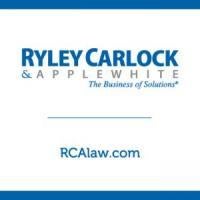The Clean Water Act (CWA) is facing an identity crisis. In the past year, conflicting federal court decisions have created a circuit split as to whether the CWA regulates pollutant releases into groundwater that is hydrologically connected to navigable waters.1 The Ninth and Fourth Circuits interpreted CWA liability broadly, applying to indirect releases of pollutants into federally protected surface waters via groundwater. The Sixth Circuit interpreted CWA liability narrowly, applying to only direct releases of pollutants into federally protected surface waters.
The uncertainty leaves regulators and the regulated community in limbo and awaiting a possible U.S. Supreme Court decision and clarifying action by the U.S. Environmental Protection Agency (EPA). While in limbo, operators in various industries – e.g., oil and gas, wastewater utilities, electric utilities, water providers, mining – are at risk of possible agency requests for groundwater quality data, enforcement action or possible citizen suits for illegal discharges based on pollution releases into groundwater that is hydrologically connected to a navigable water covered by the CWA.
“Discharge of a Pollutant”: Few Words, Many Interpretations
The CWA prohibits the “discharge of any pollutant by any person,” and defines “discharge of a pollutant” as “any addition of any pollutant to navigable waters from any point source.”2 The words “to” and “from” emphasized here are at the heart of the debate – how much time and distance can pass in between those words? Obviously, a pipeline that releases pollutants directly and instantaneously into navigable waters satisfies this definition. But what about a pipeline that releases pollutants deep underground that percolate through the groundwater over several months, and eventually release into navigable waters? Complicating the analysis is the debate over what constitutes a “point source,” which the CWA defines as “any discernible, confined and discrete conveyance” such as a pipe or a well.3
Courts have wrestled with the meaning of this text for decades. The most famous case was Rapanos v. United States, a 2006 splintered, one-hundred-plus page U.S. Supreme Court decision that spanned many issues and is most known for its ruling on the CWA navigable waters (i.e., “waters of the United States”) interpretation issue.4 As relevant to our issue here, in Rapanos, Justice Antonin Scalia observed that the CWA “does not forbid the ‘addition of any pollutant directly to navigable waters from any point source,’ but rather the ‘addition of any pollutant to navigable waters.’”5
Circuit Split: Groundwater Makes Things Tricky
Fast-forward to earlier this year, when the first of several federal circuit court decisions was issued, addressing the question of whether there is CWA liability, as an illegal discharge, for pollution that finds its way to a navigable water via groundwater. In March 2018, the Ninth Circuit in Hawai’i Wildlife Fund held that Maui County was liable under the CWA when, without a permit, it released treated wastewater into injection wells that was traced to the Pacific Ocean three months later.6 The Court found there was a “fairly traceable” connection from a point source to a navigable waterway, despite the delayed migration through a groundwater intermediary.7 Similarly, a month later, the Fourth Circuit in Upstate Forever held that Kinder Morgan Energy Partners was liable under the CWA when one of its gasoline pipelines ruptured six to eight feet underground and seeped over years into nearby rivers and wetlands.8 The Court found there was a “direct hydrological connection.”9
Then, in mid-September 2018, in Virginia Electric & Power Company, also in the Fourth Circuit, the Court concluded that while there was a direct hydrological connection between a coal-fired power plant’s coal ash landfill and settling ponds and arsenic in nearby rivers, the landfill and settling ponds did not constitute “point sources” under the CWA and therefore they were not subject to CWA liability.10 The Fourth Circuit reasoned that “point sources,” are defined as “any discernible, confined and discrete conveyance,” whereas the coal ash landfill and ponds were “static recipients” of rainwater and groundwater that flowed diffusely through them.11 Additionally, the Court noted that the arsenic contamination would still be regulated under the Resource Conservation and Recovery Act (RCRA) and specific regulations pertaining to coal combustion residuals (the CCR Rule).12 Thus, while the Fourth Circuit has acknowledged the “direct hydrological connection” test for groundwater pollution, it reined in the meaning of “point sources” and acknowledged the role of other legal authorities in place to protect water resources.
Even more recently – in late September 2018, the Sixth Circuit in Tennessee Valley Authority and Kentucky Waterways Alliance rejected the hydrological connection theory applied by the Ninth and Fourth Circuits.13 The Sixth Circuit held that two coal-fired power plants were not liable under the CWA when their coal ash settling ponds leaked selenium and other chemicals into nearby waterbodies.14 The Court relied on the CWA term “effluent limitation,” which is related to the “discharge of a pollutant” term discussed above and defined as restrictions on pollutants “which are discharged from point sources into navigable waters.”15 The Sixth Circuit held that the word “into” indicated directness and “leaves no room for intermediary mediums to carry the pollutants.”16 Like the Fourth Circuit in Virginia Electric & Power Company, the Sixth Circuit held that coal ash pollution was better regulated under RCRA and the CCR Rule.17 Also like the Fourth Circuit in Virginia Electric & Power Company, the Sixth Circuit seemed to reject that coal ash ponds could constitute point sources.18
Notably, in accepting or rejecting the hydrological connection theory, all of these decisions relied on the “to” and “from” language in the definition of “discharge of a pollutant” and on Justice Scalia’s quote from Rapanos, but each circuit interpreted these legal sources differently. The Ninth and Fourth Circuits held that when a pollutant travels through groundwater, it still originally comes “from” a point source.19 But the Sixth Circuit held that once a pollutant travels through groundwater, it comes “from” groundwater which is not a point source.20 The Ninth and Fourth Circuits held that Justice Scalia’s quote recognized his support for CWA liability for indirect releases that are not directly emitted but may pass through conveyances in between.21 The Sixth Circuit held that Justice Scalia’s quote was merely meant to explain that pollutants which travel through multiple point sources are still covered by the CWA.22
Finally, while these decisions declined to venture into the quagmire of whether groundwater constitutes navigable water under the CWA, Justice Anthony Kennedy’s “significant nexus” test in Rapanos for wetlands (i.e., the CWA applies to any waterbody that affects the “chemical, physical, and biological integrity” of a navigable waterway”) could one day be applied to groundwater.23 If groundwater qualified as navigable water under the CWA, that would effectively broaden CWA liability even more than the hydrological connection theory at issue today. For now, EPA and the courts view groundwater as excluded from CWA jurisdiction.24
Implications for Regulated Community: Information Requests, Enforcement Actions and Citizen Suits
The Ninth and Fourth Circuit decisions can be viewed to present a potentially significant expansion of CWA jurisdiction and liability, whereas the Sixth Circuit decisions preserve the status quo. The Supreme Court is already considering a petition for review from Hawai’i Wildlife Fund, and while it is always hard to predict which cases the Supreme Court will accept, the circuit split over groundwater liability seems like a perfect candidate. The absences of Justice Scalia and Kennedy would give the Supreme Court a fresh chance to re-interpret the CWA.
Meanwhile, EPA is considering whether to regulate releases to groundwater with a hydrological connection to jurisdictional waters under the CWA.25 In early 2018, EPA accepted public comments on the issue and may release a decision soon.
While in limbo, the regulated community should tread carefully. The other circuits, including the Tenth Circuit, have not directly weighed in on this issue. Although, previous opinions from the Second and Fifth Circuits indicate possible agreement with the Fourth and Ninth Circuits’ recent opinions regarding the hydrologic connection theory of CWA liability.26 An operation that is releasing pollutants, even with a National Pollutant Discharge Elimination System (NPDES) permit or state equivalent for direct releases to navigable waters, may be found liable under CWA for releases into groundwater. Operators also should be aware of whether publicly available data could support possible citizen suits founded on claims of illegal discharges. Notably, each of the circuit court cases decided this year were originally filed as citizen suits under the CWA. While EPA and State enforcement actions are possible, they may be less likely given the current state of legal uncertainty, particularly in areas outside of the Fourth, Sixth and Ninth Circuits.
If you have an injection well, underground storage tank, pipeline, landfill, waste pond, waste impoundment, mine, or any other facility that may be releasing contaminated materials into groundwater, consider whether your facility may qualify as a point source. For example, does it serve as a discrete channel or medium, or rather, does it act more like a static or diffuse recipient, alike the coal ash facilities in Virginia Electric & Power Company? Are groundwater quality data publicly available that could be used to establish a connection between your facility and surface water quality degradation?
If the facility could qualify as a point source, you may ultimately be faced with working with a hydrogeologist to analyze the risk of potential groundwater pollution and the possibility of a connection to surface water. In Hawai’i Wildlife Fund and Upstate Forever, concerning the release from injection wells traced to the Pacific Ocean months later and the ruptured gasoline pipelines that seeped over years into nearby waters, there was considered to be overwhelming direct evidence of a hydrological connection, but in other situations, it may be more attenuated. Such investigative work to prove or disprove a direct hydrological connection will be costly, resource intensive, and may lead to more questions or even “bad news” and therefore should proceed with caution.
References:
1Tenn. Clean Water Network v. TVA, ___ F.3d ___, 2018 U.S. App. LEXIS 27237 (6th Cir. Sept. 24, 2018); Ky. Waterways All. v. Ky. Utils. Co., ___ F.3d ___, 2018 U.S. App. LEXIS 27238 (6th Cir. Sept. 24, 2018); Sierra Club v. Va. Elec. & Power Co., ___ F.3d ___, 2018 U.S. App. LEXIS 25831 (4th Cir. Sept. 12, 2018); Upstate Forever v. Kinder Morgan Energy Partners, L.P., 887 F.3d 637 (4th Cir. Apr. 12, 2018); Hawai’i Wildlife Fund v. Cty. of Maui, 886 F.3d 737 (9th Cir. Mar. 30, 2018).
233 U.S.C. §§ 1311(a), 1362(12).
333 U.S.C. § 1362(14).
4Rapanos v. United States, 547 U.S. 715 (2006); see 33 U.S.C. § 1362(7).
5Id. at 743 (emphasis in original).
6Hawai’i Wildlife Fund, 886 F.3d at 749.
7Id. at 749 n.3.
8Upstate Forever, 887 F.3d at 643-44, 653.
9Id. at 651.
10Va. Elec. & Power Co., 2018 U.S. App. LEXIS 25831, at *13.
1133 U.S.C. § 1362(14); Va. Elec. & Power Co., 2018 U.S. App. LEXIS 25831, at **16-18.
12Va. Elec. & Power Co., 2018 U.S. App. LEXIS 25831, at **19-20.
13TVA, 2018 U.S. App. LEXIS 27237, at *24; Ky. Waterways All., 2018 U.S. App. LEXIS 27283, at *30.
14TVA, 2018 U.S. App. LEXIS 27237, at **6-9, 28; Ky. Waterways All.., 2018 U.S. App. LEXIS 27283, at **12, 30.
1533 U.S.C. §§ 1362(11) (emphasis added); TVA, 2018 U.S. App. LEXIS 27237, at **18-19; Ky. Waterways All.., 2018 U.S. App. LEXIS 27283, at **19-20.
16TVA, 2018 U.S. App. LEXIS 27237, at *19; Ky. Waterways All.., 2018 U.S. App. LEXIS 27283, at *20.
17TVA, 2018 U.S. App. LEXIS 27237, at **21-24; Ky. Waterways All.., 2018 U.S. App. LEXIS 27283, at **27-29.
18TVA, 2018 U.S. App. LEXIS 27237, at *15 n.6; Ky. Waterways All.., 2018 U.S. App. LEXIS 27283, at **20 n.8.
19Hawai’i Wildlife Fund, 886 F.3d at 746; Upstate Forever, 887 F.3d at 650.
20TVA, 2018 U.S. App. LEXIS 27237, at *19; Ky. Waterways All.., 2018 U.S. App. LEXIS 27283, at *20.
21Hawai’i Wildlife Fund, 886 F.3d at 748; Upstate Forever, 887 F.3d at 650.
22TVA, 2018 U.S. App. LEXIS 27237, at **20-21; Ky. Waterways All.., 2018 U.S. App. LEXIS 27283, at *24.
23See Rapanos, 547 U.S. at 779 (Kennedy, J., concurring).
24See 33 CFR § 328.3(b)(5); Hawai’i Wildlife Fund, 886 F.3d at 746 n.2 (“We assume without deciding the groundwater here is neither a point source nor a navigable water under the CWA.”).
25See EPA Request for Comments, Clean Water Act Coverage of "Discharges of Pollutants" via a Direct Hydrologic Connection to Surface Water, 83 Fed. Reg. 7126 (Feb. 20, 2018), summarizing EPA’s previous statements regarding possible CWA liability for release to groundwater. For example, EPA has previously recognized that ‘‘there are scientific uncertainties and site-specific considerations with respect to regulating discharges to surface water via groundwater with a direct hydrologic connection to surface water [and] conflicting legal precedents on this issue.” 83 Fed. Reg. 7126, 7127.
26See Peconic Baykeeper, Inc. v. Suffolk Cty., 600 F.3d 180, 188-89 (2d Cir. 2010) (upholding CWA liability for pollutants traveling through air); Concerned Area Residents for Env’t v. Southview Farm, 34 F.3d 114, 118-19 (2d Cir. 1994) (upholding CWA liability for pollutants traveling through fields); Sierra Club v. Abston Construction, 620 F.2d 41 (5th Cir. 1980) (upholding CWA liability for pollutants traveling through mine drainage system).





 />i
/>i
